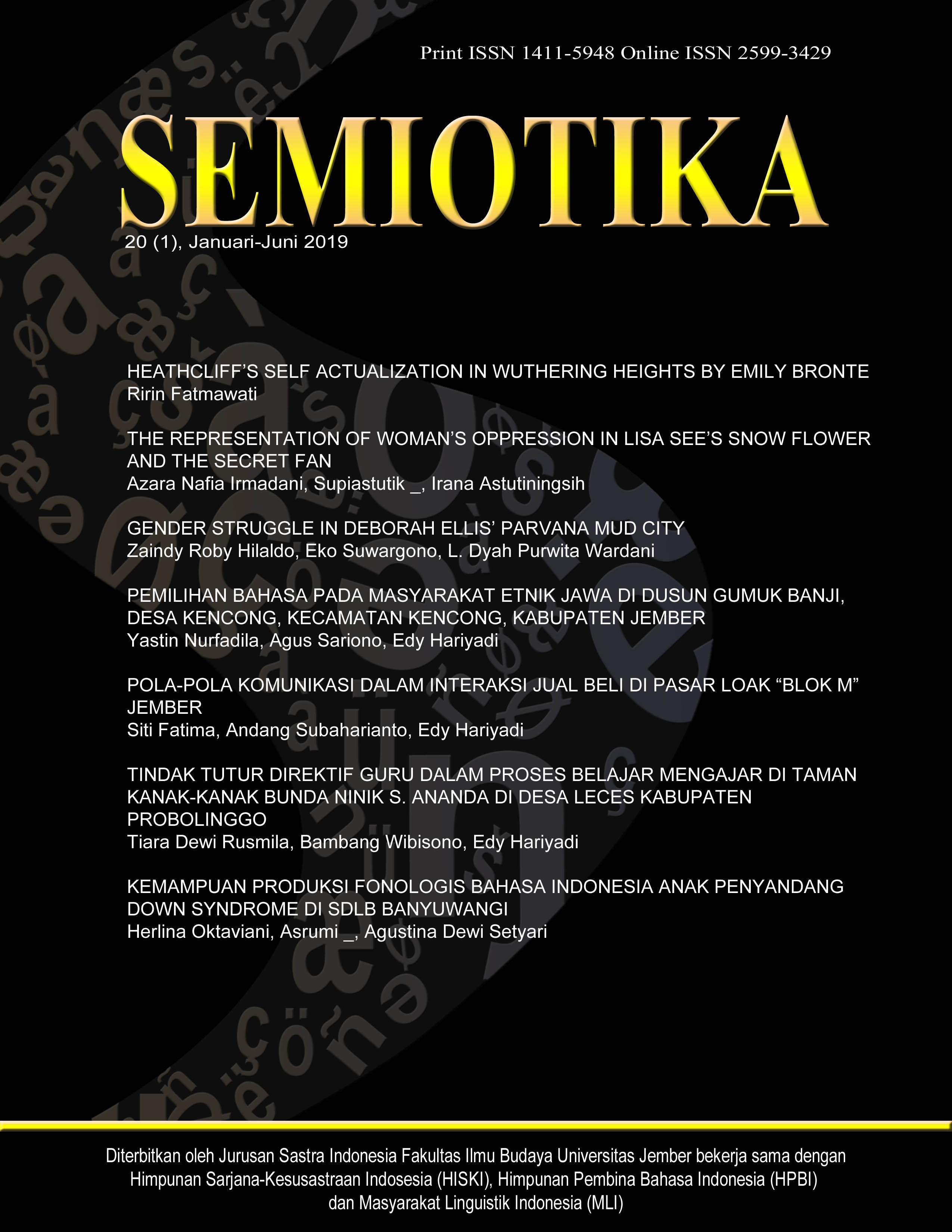KEMAMPUAN PRODUKSI FONOLOGIS BAHASA INDONESIA ANAK PENYANDANG DOWN SYNDROME DI SDLB BANYUWANGI
DOI:
https://doi.org/10.19184/semiotika.v20i1.9589Keywords:
konsonan, down syndrome, produksi fonologis, vokalAbstract
This study examines the ability of phonological production or the ability to produce language sounds, namely vowels and consonants in Indonesian with Down syndrome, a student of the Banyuwangi An-Moerty Extraordinary Primary School. Phonological sensitivity has an important role in communicating creativity, including for persons with disabilities. The purpose of this study is to describe phonological production capabilities, and to find out the causes of the inability to pronounce language sounds of persons with Down syndrome, Bagus Chandra. This research is a qualitative research. This research data in the form of words spoken by Bagus Candra collected by the method of observation or observation with note-taking techniques and data in the form of information from the people closest to home and school were collected by interview method with note-taking techniques. Language data that have been classified are analyzed by distributional methods or agih methods with basic BUL techniques and advanced techniques: skipping, replacing, inserting, and changing the meanings, while data in the form of information are analyzed by descriptive analytical methods. The results of this study indicate that Bagus Chandra's phonological production ability in producing vowel sounds and consonant sounds is mostly perfect, because all vowel sounds [a], [i], [u], [e], and [o], and consonant sounds which includes sounds [b], [c], [d], [g], [h], [j], [k], [l], [m], [n], [p], [q] , [s], [t], and [y] can be pronounced correctly without obstacles. In this case, only a small part of the consonant sound, namely: sounds [r], [f], [v], [w], [x], and, [z] cannot be pronounced perfectly. Physically, the inability is caused by abnormal growth of the tongue, which is the size of the tongue that is longer and wider, and often extended.
Downloads
Downloads
Published
Issue
Section
License
SEMIOTIKA has CC-BY-SA or an equivalent license as the optimal license for the publication, distribution, use, and reuse of scholarly work. Authors who publish with this journal retain copyright and grant the journal right of first publication with the work simultaneously licensed under a Creative Commons Attribution-ShareAlike 4.0 International License that allows others to share the work with an acknowledgment of the work's authorship and initial publication in this journal.
Attribution-ShareAlike
CC BY-SA


